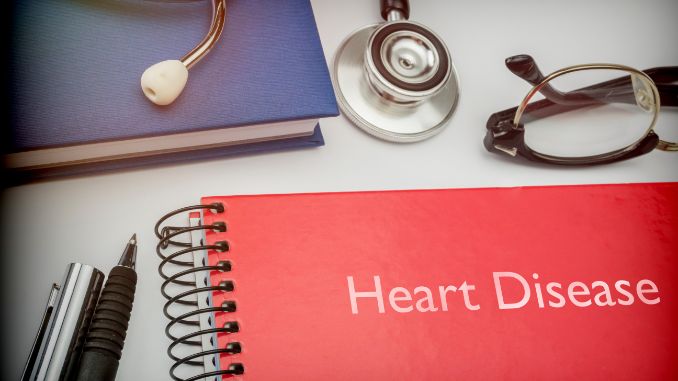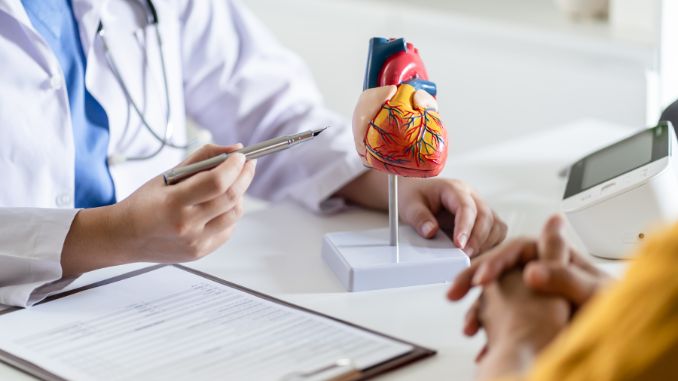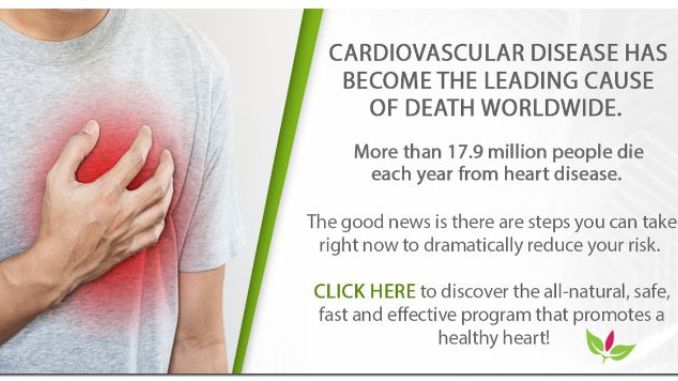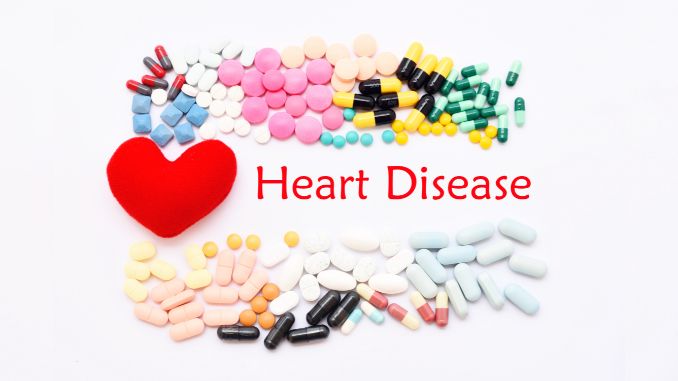We’ve all heard stories of seemingly healthy individuals suddenly experiencing a heart attack [1]. Is it truly that sudden, or are there warning signs? In this blog, we’ll uncover the early heart disease symptoms, such as dizziness and chest pain, and share strategies for maintaining a strong and healthy heart.
What is Heart Disease?
Heart disease, also called cardiovascular disease, is a broad term encompassing various conditions affecting the structure and function of the heart. These conditions often arise from factors such as high blood pressure, high cholesterol, smoking, obesity, or an inactive lifestyle. It includes:
- Coronary Artery Disease (CAD): Blockages in the arteries that supply blood to the heart.
- Arrhythmias [4]: Irregular heartbeats can disrupt the heart’s pumping ability.
- Heart Failure: The heart cannot pump blood effectively, leading to fatigue and then shortness of breath.
- Congenital Heart Defects: Structural issues present at birth.
- Valvular Heart Disease [3]: Malfunctioning heart valves impact blood flow.
- Cardiomyopathy: Diseases of the heart muscle that affect its ability to pump blood.
- Pericarditis: Inflammation of the lining around the heart.

The Silent Communicator: How Your Heart Warns You
Basically, your heart communicates constantly. When it does not receive enough blood, it sends distress signals to indicate potential issues.
With its dense network of nerve tissue, it often sends distress signals when something is wrong. However, these signs can be subtle or indirect, making them easy to miss.
Common Symptoms of Heart Disease:
- Chest pain or discomfort: A classic symptom but not always present.
- Shortness of breath: This may occur during activity or even at rest.
- Fatigue: Persistent tiredness without a clear cause.
- Pain in other areas: Including the jaw, back, arms, or neck.
- Digestive issues: Nausea or indigestion mistaken for a stomach issue.
These symptoms can be warning signs of heart attacks.
Unexpected Warning Signs
No Chest Pain Could Be Dangerous
Up to 30–40% of people with heart disease, particularly women and younger individuals, experience no chest pain, which is one of the critical heart disease symptoms.
Instead, symptoms like fatigue, shortness of breath, or back pain may occur, delaying diagnosis and then treatment.
Younger Women and A typical Symptoms
Women under 45 often experience heart disease symptoms differently due to hormonal factors. A lack of chest pain in this group can mislead doctors, leading to delayed care.
This group is often affected by more aggressive forms of heart disease.
Less Common Early Signs
- Trouble sleeping: Difficulty breathing or restlessness at night.
- Back pain: Often mistaken for muscle strain.
- Sudden weakness or lightheadedness: Difficulty performing routine activities.
- Sweating, arm pain, jaw pain, or throat pain: Symptoms that can mimic other conditions.
These less common signs are also important heart disease symptoms.
The Widowmaker: A Sudden Threat
Heart disease can strike suddenly. The “widowmaker” refers to a blockage in the left anterior descending (LAD) artery, which supplies blood to the heart’s left ventricle. If the artery is fully blocked, it can lead to sudden death.
Early Prevention Is Key:
- Control risk factors like high blood pressure, high cholesterol, and diabetes to prevent cardiovascular disease.
- Maintain a healthy weight and then a diet.
Silent Causes of Heart Disease
Some risk factors don’t present obvious symptoms but are crucial to address for preventing cardiovascular disease:
- High Blood Pressure: Often symptomless, requires regular monitoring.
- High Cholesterol: Detected only through blood tests.
- Diabetes: May not always show clear symptoms but significantly raises heart disease risk.

Prevention and Lifestyle Tips
Exercise Matters
A brisk walk for 15–30 minutes daily can significantly reduce your risk of heart disease. Exercise helps ensure the heart receives enough blood, which is crucial for preventing conditions like dizziness and then chest pain.
However, even those recovering from heart conditions benefit from moderate physical activity.
Heart-Healthy Foods
Incorporate these heart-healthy foods into your diet to help prevent cardiovascular disease:
- Fatty fish: Salmon, mackerel, and then tuna.
- Nuts: Almonds and walnuts.
- Berries: Blueberries, strawberries, and raspberries.
- Leafy greens: Spinach, asparagus, and broccoli.
- Legumes: Black beans and then kidney beans.
- Whole grains: Oatmeal and flaxseed.
Quit Smoking
Smoking damages blood vessels and then accelerates the risk of cardiovascular disease and heart disease.
Seek support from a healthcare provider to quit and be aware of heart disease warning signs.
Special Considerations: Young People and Sudden Cardiac Death
While rare, young, healthy individuals may also be at risk of sudden cardiac death and heart attacks.
However, conditions like hypertrophic cardiomyopathy (HCM) [5], coronary artery abnormalities, or long QT syndrome are key culprits.
Warning Signs to Watch For:
- Fainting spells.
- Recognizing heart disease symptoms early, such as dizziness and chest pain, is crucial.
- A family history of sudden cardiac death.
Recognizing a Heart Attack

Recognizing the signs of a heart attack is crucial for prompt medical attention and minimizing damage to the heart muscle.
A heart attack, also known as a myocardial infarction, occurs when the blood flow to the heart is blocked, causing damage to the heart muscle.
The symptoms of a heart attack can vary from person to person, but common warning signs include:
- Chest pain or discomfort is the most common symptom of a heart attack. It can feel like tightness, pressure, or pain in the chest.
- Shortness of breath: People experiencing a heart attack may feel winded or unable to catch their breath even when they are at rest.
- Cold sweat: Breaking out in a cold sweat for no obvious reason can be a sign of a heart attack.
- Lightheadedness or dizziness: Feeling faint or dizzy can be a symptom of a heart attack, especially if accompanied by chest discomfort or shortness of breath.
- Pain or discomfort in the arms, back, neck, jaw, or stomach: This type of pain can be a sign of a heart attack, especially if it is accompanied by chest pain or pressure.
It’s essential to remember that not everyone who has a heart attack will experience all of these symptoms, and some people may have different symptoms altogether.
If you or someone you know is experiencing any of these symptoms, it’s crucial to call emergency services immediately.
Dr. Joe Whittington warns about specific symptoms that may indicate severe cardiovascular problems, such as visible pulsations when pressing down on the nail bed, known as Quincke’s sign, which can suggest aortic regurgitation.
He advises those noticing such signs to seek medical evaluation and consider an echocardiogram.
How Long Does It Take to Recover From Treatment?
Recovery time varies depending on the treatment, individual circumstances, and the presence of heart disease warning signs.
- Stent Placement: Usually 1 week.
- Bypass Surgery: 6–12 weeks, with gradual return to daily activities.
- Heart Attack: Recovery depends on severity but often includes cardiac rehabilitation over several weeks or months.
- Heart Valve Surgery: 6–12 weeks or more, with physical therapy recommended.
These treatments help ensure the heart receives enough blood, preventing complications like dizziness and chest pain.
Adopting lifestyle changes, such as exercise and a healthy diet, is essential for long-term recovery and prevention of heart disease warning signs.
Management, Diagnosis, Tests, and Treatment
Management
Lifestyle Changes:
Making lifestyle changes is crucial for managing cardiovascular disease, recognizing heart disease warning signs, and improving overall heart health.
- Exercise regularly (e.g., brisk walking for 15–30 minutes daily).
- Eat heart-healthy foods (e.g., fatty fish, berries, nuts, and leafy greens).
- Avoid smoking and manage stress effectively.
- Weight Control: Maintain a healthy weight to reduce risk.
- Monitor Blood Pressure and Cholesterol: Regularly check and manage these key risk factors.
Diagnosis
Doctors use the following tests to diagnose cardiovascular disease and heart disease [2]:
- Electrocardiogram (ECG/EKG): Measures electrical activity in the heart.
- Echocardiogram: Uses sound waves to create images of the heart.
- Stress Tests: Evaluates how your heart performs under physical activity.
- Blood Tests: Checks cholesterol, blood sugar, and inflammation markers.
- Angiogram: X-ray imaging to check blood flow through coronary arteries.
Treatment
Medications:
- Statins: Lower cholesterol levels.
- Beta-blockers: Regulate heart rhythm and reduce blood pressure.
- ACE Inhibitors: Relax blood vessels to lower blood pressure.
Lifestyle Modifications:
- Adopt a heart-healthy diet, quit smoking, stay active, and be aware of heart disease warning signs.
Surgical Interventions:
- Angioplasty: Opens blocked arteries using a balloon and stent.
- Bypass Surgery: Creates a new path for blood flow around blocked arteries.
- Valve Repair/Replacement: Corrects valve issues.
Cardiac Rehabilitation:
A supervised program to improve physical fitness, nutrition, and emotional well-being post-treatment.
Taking Action
If you or someone you know is experiencing symptoms of a heart attack, it’s essential to take action quickly. Here are some steps you can take:
- Call emergency services: If you are in the US, call 911. If you are in another country, call the local emergency number.
- Stay calm: Try to remain calm and still, as this can help reduce the workload on the heart.
- Loosen tight clothing: Remove any tight clothing that may be constricting the chest or neck.
- Stay on the line: If you are on the phone with emergency services, stay on the line and follow their instructions.
- Take an aspirin: If the person experiencing symptoms is conscious and able to swallow, give them an aspirin. However, do not give them anything else unless instructed to do so by emergency services.
Remember, prompt medical attention is crucial for minimizing damage to the heart muscle and improving outcomes. Don’t delay – call for help immediately if you or someone you know is experiencing symptoms of a heart attack.
Conclusion
Heart disease is a serious condition that can have devastating consequences if left untreated. However, by recognizing the warning signs and taking action quickly, you can minimize damage to the heart muscle and improve outcomes.
Remember to stay informed about heart disease risk factors, such as high blood pressure, high cholesterol, and family history, and take steps to manage them. By working together, we can reduce the impact of heart disease and improve heart health for everyone.
Jumpstart your journey to a healthier heart with our 14-Day Heart Health Quick Start Program! This comprehensive digital download is packed with expert guidance, heart-friendly recipes, and simple lifestyle tips to help you thrive. Don’t wait—take charge of your heart health today!

Frequently Asked Questions
How can I tell if I have an unhealthy heart?
Symptoms of an unhealthy heart include chest pain, shortness of breath, fatigue, irregular heartbeats, swelling in the legs, and unexplained weakness. Some people may have no symptoms, making regular check-ups important.
Can heart disease be prevented?
Yes, heart disease can often be prevented through lifestyle changes such as regular exercise, a heart-healthy diet, avoiding smoking, managing stress, and controlling risk factors like high blood pressure, cholesterol, and diabetes.
What is the biggest indicator of heart disease?
Chest pain (angina), shortness of breath, or unexplained fatigue are common indicators. Silent risk factors, like high blood pressure and cholesterol, are also major warning signs.
What is stage 1 heart failure?
Stage 1 heart failure occurs when there is no noticeable damage to the heart, but risk factors like high blood pressure, diabetes, or a family history of heart disease are present, increasing the likelihood of future symptoms.
What is the best exercise for heart disease?
Aerobic exercises, such as brisk walking, cycling, swimming, or light jogging, improve heart health. Aim for 30 minutes of moderate activity most days of the week.

Rick Kaselj MS, is a leading kinesiologist and injury specialist as well as co-creator of the best-selling Unlock Your Hip Flexors program. Rick creates exercise programs that help people heal injuries and eliminate pain, so they can go back to living a full, active, healthy life.



